0127 According to the scholastics, humans are rational animals. The animal foundation supports the specifying sign. The rational qualifier associates to the exemplar sign. A hand-off occurs in the situation-level actuality2b of the interscope for the specifying and exemplar signs.
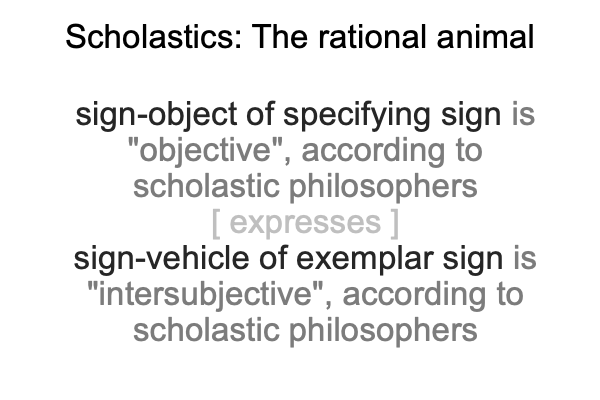
Now, imagine the fashioning of a philosophical instrument according to the following diagram.
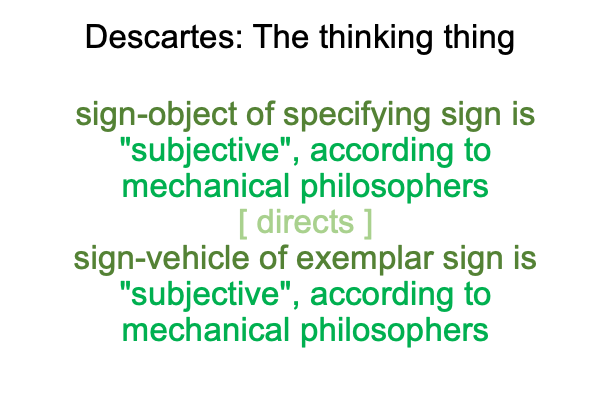
Did I write that correctly?
0128 Another way to say that is, “The moderns call the intersubjective level, ‘subjective’. Plus, the moderns call the suprasubjective level, ‘objective’.”
Consequently, Descartes seems to be saying, “The ‘subjective’ has the character of ens rationis (mind-dependent being) and the ‘objective’ has the character of an ens reale (mind-independent being) that we (mechanical philosophers) can agree on.”
0129 A simple translation of Descartes’ formulation into a category-based nested form yields the following modern epistemology.
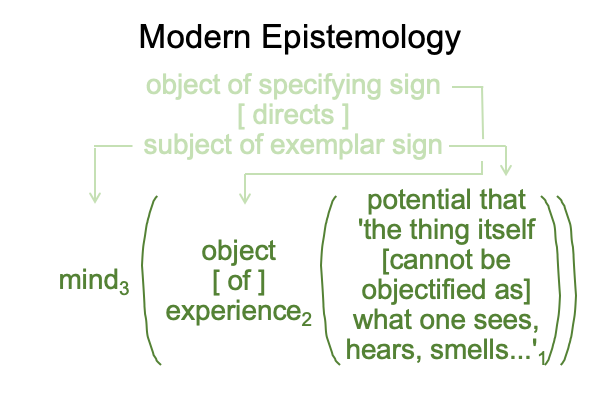
0130 The mind3 is a Cartesian intellect3.
The object of experience2 concerns the species expressa, where salamanders are conjured by fire2. This species expressais an opinion, a “subjective” view that accounts for what oneself and others have observed.
The potential1 offers a skeptical counterpoint1. The salamander1 cannot be objectified by one’s casual observation that it runs out of a fire1. Systematic observations are required in order to reach an “objective” (and for scholastics, “suprasubjective”) conclusion.
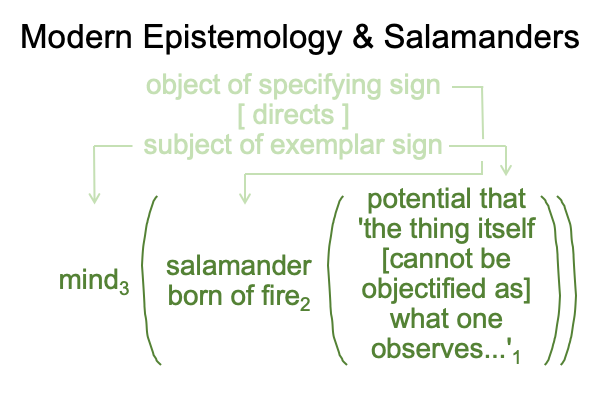
0131 Note how Cartesian skepticism sets the stage for the civilizational ascent of so-called “expertise”.
The corresponding exemplar sign says, “The idea that fire births salamanders2b (SV) stands for a ‘subjective’ (for moderns, ‘intersubjective’ for scholastics) false opinion2c (SO) in regards to what mechanical philosophers say3c about the potential of systematic observations1c (SI).
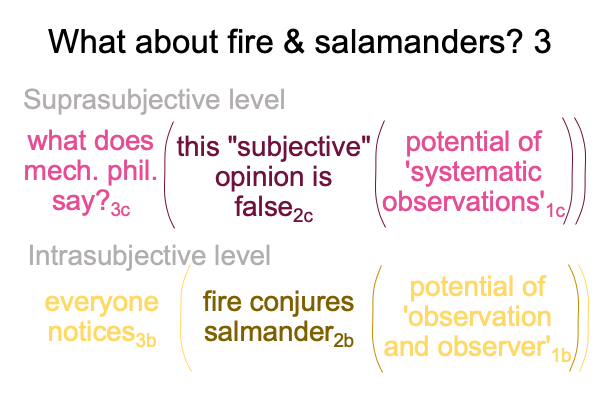
0132 In the column for normal context, the question of what the mechanical philosopher says3c puts the fact that everyone notices3b into perspective.
In the column for potential, systematic observations1c virtually contextualizes casual or common place observations1b.
In the column for actuality, the common expression that fire conjures salamanders2b is virtually contextualized by the conclusion that this “subjective” opinion is not “objective”2c.
0133 Then, the subsequent interventional sign brings the focus of attention back, not to the external world, but the world of science.
Here is a picture.
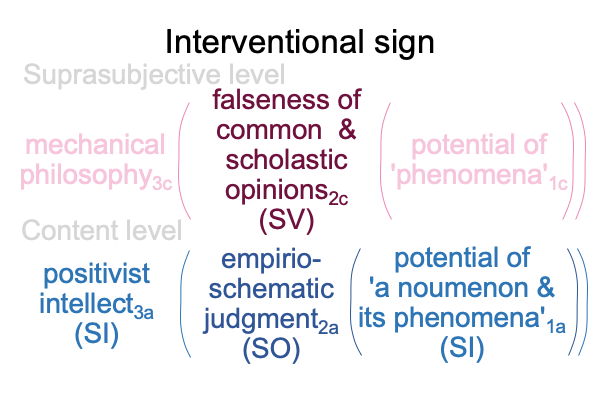
0134 The falseness of common and scholastic inquiry2c (SV) stands for the necessity of the empirio-schematic judgment2a(SO) in regards to the positivist intellect3a arising from the potential of phenomena1a (SI).
Phenomena are systematically observable and measurable facets of a noumenon.
0135 Perhaps, the fact that the sign-object and sign-interpretant of the interventional sign of the mechanical philosophersmanifests as the elements of the Positivist’s judgment, is a coincidence.
Perhaps, not.
